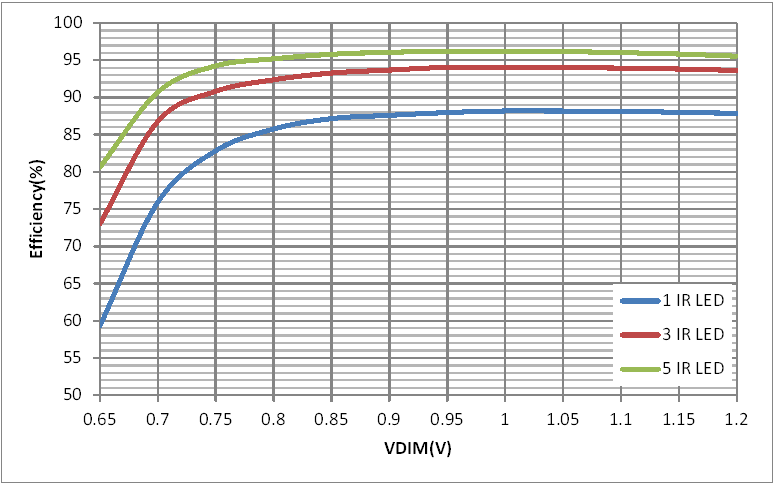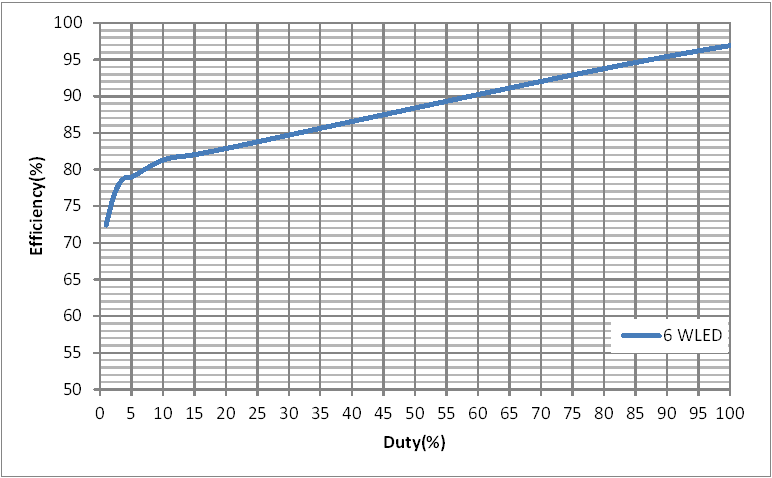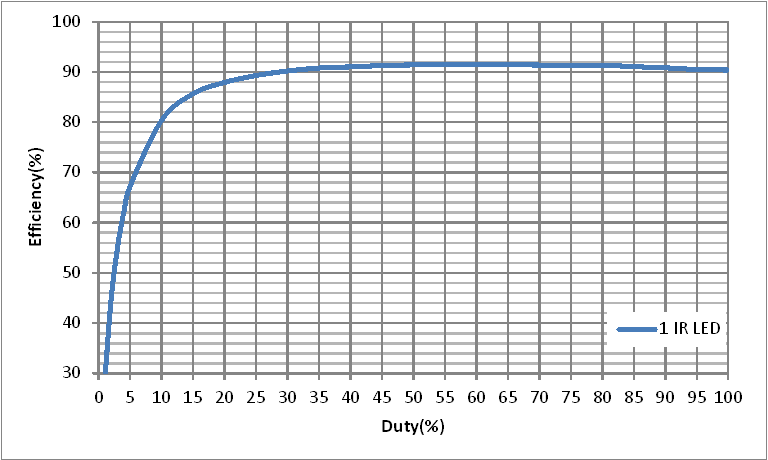SLUUBZ9 May 2020 TPS92200
4.1 Efficiency
Figure 1 shows the efficiency versus VDIM in analog dimming mode. The maximum LED current is 1.5 A when the VDIM is 1.2V. VIN = 12 V, and an infrared (IR) LED load is used. The typical forward voltage of an IR LED is 1.7 V at 1.5 A. The LED number in series is 1, 3, and 5, respectively.
 Figure 1. Efficiency vs. VDIM in Analog Dimming Mode(TPS92200D1), 1.5 A at VDIM>=1.2V, VIN = 12 V
Figure 1. Efficiency vs. VDIM in Analog Dimming Mode(TPS92200D1), 1.5 A at VDIM>=1.2V, VIN = 12 V Figure 2 shows the efficiency versus PWM Duty Cycle in PWM dimming mode. PWM frequency is 500hz, LED current is set at 1.0 A. 6 White LEDs are used. The typical forward voltage of a White LED is 3 V at 1 A.
 Figure 2. Efficiency vs. PWM Duty Cycle in PWM Dimming Mode(TPS92200D1), 1.0 A at 100% Duty
Figure 2. Efficiency vs. PWM Duty Cycle in PWM Dimming Mode(TPS92200D1), 1.0 A at 100% Duty Figure 3 shows the efficiency versus PWM Duty Cycle in Analog dimming mode. PWM frequency is 50khz, LED current is set at 1.0 A. two IR LEDs are used. The typical forward voltage of a White LED is 1.65 V at 1 A.
 Figure 3. Efficiency vs. PWM Duty Cycle in Analog Dimming Mode(TPS92200D2)
Figure 3. Efficiency vs. PWM Duty Cycle in Analog Dimming Mode(TPS92200D2)